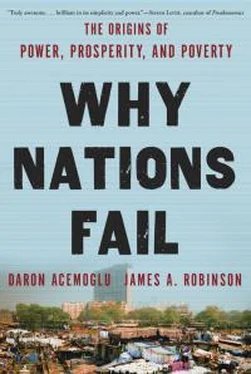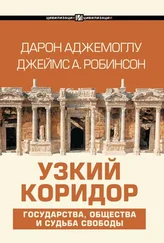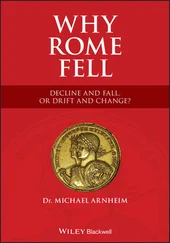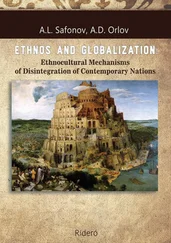The emergence of political elites most likely created the transition first to sedentary life and then to farming. As the Natufian sites show, sedentary life did not necessarily mean farming and herding. People could settle down but still make their living by hunting and gathering. After all, the Long Summer made wild crops more bountiful, and hunting and gathering was likely to have been more attractive. Most people may have been quite satisfied with a subsistence life based on hunting and gathering that did not require a lot of effort. Even technological innovation doesn’t necessarily lead to increased agricultural production. In fact, it is known that a major technological innovation, the introduction of the steel axe among the group of Australian Aboriginal peoples known as Yir Yoront, led not to more intense production but to more sleeping, because it allowed subsistence requirements to be met more easily, with little incentive to work for more.
The traditional, geography-based explanation for the Neolithic Revolution—the centerpiece of Jared Diamond’s argument, which we discussed in chapter 2—is that it was driven by the fortuitous availability of many plant and animal species that could easily be domesticated. This made farming and herding attractive and induced sedentary life. After societies became sedentary and started farming, they began to develop political hierarchy, religion, and significantly more complex institutions. Though widely accepted, the evidence from the Natufians suggests that this traditional explanation puts the cart before the horse. Institutional changes occurred in societies quite a while before they made the transition to farming and were probably the cause both of the move to sedentarism, which reinforced the institutional changes, and subsequently of the Neolithic Revolution. This pattern is suggested not only by the evidence from the Hilly Flanks, which is the area most intensively studied, but also by the preponderance of evidence from the Americas, sub-Saharan Africa, and East Asia.
Certainly the transition to farming led to greater agricultural productivity and enabled a significant expansion of population. For instance, in sites such as Jericho and Abu Hureyra, one sees that the early farming village was much larger than the prefarming one. In general, villages grew by between two and six times when the transition took place. Moreover, many of the consequences that people have traditionally argued as having flowed from this transition undoubtedly happened. There was greater occupational specialization and more rapid technological progress, and probably the development of more complex and possibly less egalitarian political institutions. But whether this happened in a particular place was not determined by the availability of plant and animal species. Instead, it was a consequence of the society’s having experienced the types of institutional, social, and political innovations that would have allowed sedentary life and then farming to emerge.
Though the Long Summer and the presence of crop and animal species allowed this to happen, it did not determine where or when exactly, after the climate had warmed up, it would happen. Rather, this was determined by the interaction of a critical juncture, the Long Summer, with small but important institutional differences that mattered. As the climate warmed up, some societies, such as the Natufians, developed elements of centralized institutions and hierarchy, though these were on a very small scale relative to those of modern nation-states. Like the Bushong under Shyaam, societies reorganized to take advantage of the greater opportunities created by the glut of wild plants and animals, and it was no doubt the political elites who were the main beneficiaries of these new opportunities and of the political centralization process. Other places that had only slightly different institutions did not permit their political elites to take similar advantage of this juncture and lagged behind the process of political centralization and the creation of settled, agricultural, and more complex societies. This paved the way to a subsequent divergence of exactly the type we have seen before. Once these differences emerged, they spread to some places but not to others. For example, farming spread into Europe from the Middle East starting around 6500 BC, mostly as a consequence of the migration of farmers. In Europe, institutions drifted away from parts of the world, such as Africa, where initial institutions had been different and where the innovations set in motion by the Long Summer in the Middle East happened only much later, and even then in a different form.
THE INSTITUTIONAL INNOVATIONS of the Natufians, though they did most likely underpin the Neolithic Revolution, did not leave a simple legacy in world history and did not lead inexorably to the long-run prosperity of their homelands in modern Israel, Palestine, and Syria. Syria and Palestine are relatively poor parts of the modern world, and the prosperity of Israel was largely imported by the settlement of Jewish people after the Second World War and their high levels of education and easy access to advanced technologies. The early growth of the Natufians did not become sustained for the same reason that Soviet growth fizzled out. Though highly significant, even revolutionary for its time, this was growth under extractive institutions. For the Natufian society it was also likely that this type of growth created deep conflicts over who would control institutions and the extraction they enabled. For every elite benefiting from extraction there is a non-elite who would love to replace him. Sometimes infighting simply replaces one elite with another. Sometimes it destroys the whole extractive society, unleashing a process of state and societal collapse, as the spectacular civilization that Maya city-states built more than one thousand years ago experienced.
THE UNSTABLE EXTRACTION
Farming emerged independently in several places around the world. In what is now modern Mexico, societies formed that established states and settlements, and transitioned to agriculture. As with the Natufians in the Middle East, they also achieved some degree of economic growth. The Maya city-states in the area of southern Mexico, Belize, Guatemala, and Western Honduras in fact built a fairly sophisticated civilization under their own brand of extractive institutions. The Maya experience illustrates not only the possibility of growth under extractive institutions but also another fundamental limit to this type of growth: the political instability that emerges and ultimately leads to collapse of both society and state as different groups and people fight to become the extractors.
Maya cities first began to develop around 500 BC. These early cities eventually failed, sometime in the first century AD. A new political model then emerged, creating the foundation for the Classic Era, between AD 250 and 900. This period marked the full flowering of Maya culture and civilization. But this more sophisticated civilization would also collapse in the course of the next six hundred years. By the time the Spanish conquistadors arrived in the early sixteenth century, the great temples and palaces of such Maya sites as Tikal, Palenque, and Calakmul had receded into the forest, not to be rediscovered until the nineteenth century.
The Maya cities never unified into an empire, though some cities were subservient to others, and they often appear to have cooperated, particularly in warfare. The main connection between the region’s city-states, fifty of which we can recognize by their own glyphs, is that their people spoke around thirty-one different but closely related Mayan languages. The Mayas developed a writing system, and there are at least fifteen thousand remaining inscriptions describing many aspects of elite life, culture, and religion. They also had a sophisticated calendar for recording dates known as the Long Count. It was very much like our own calendar in that it counted the unfolding of years from a fixed date and was used by all Maya cities. The Long Count began in 3114 BC, though we do not know what significance the Mayas attached to this date, which long precedes the emergence of anything resembling Maya society.
Читать дальше












